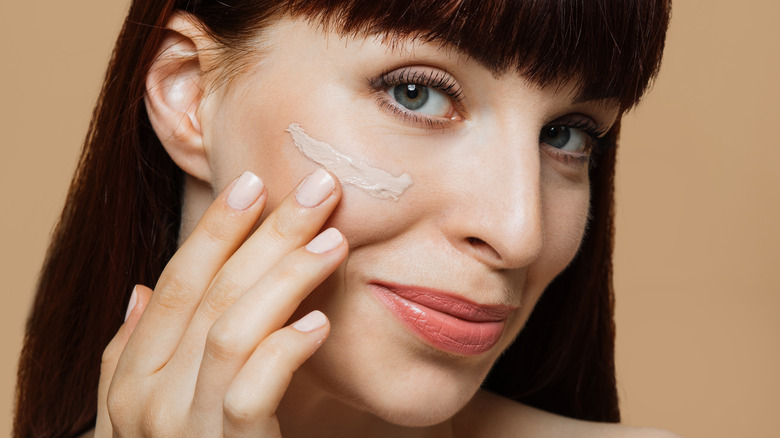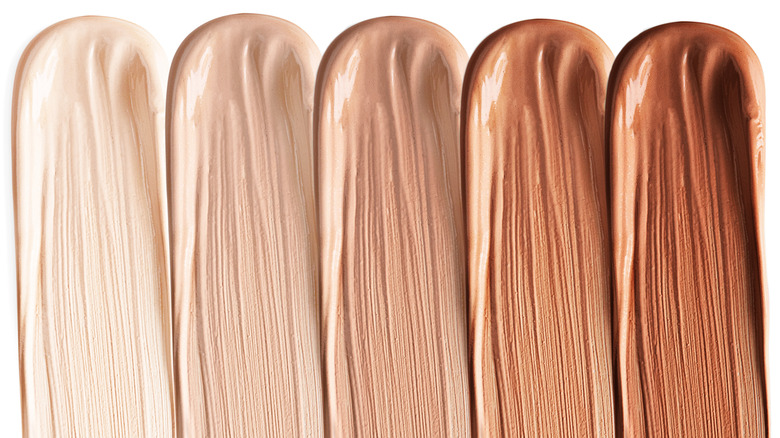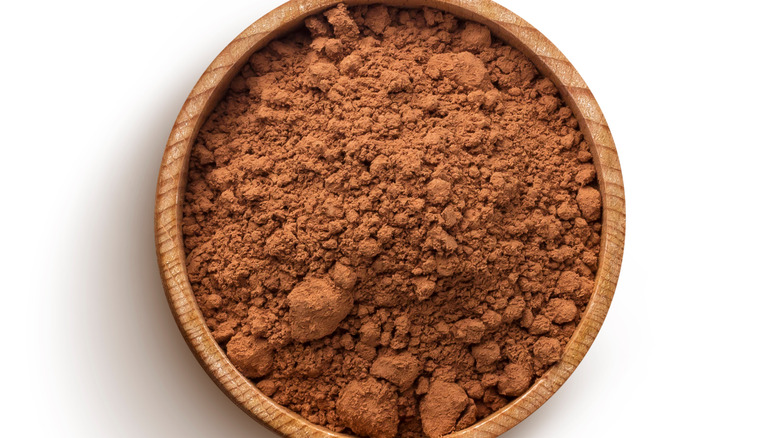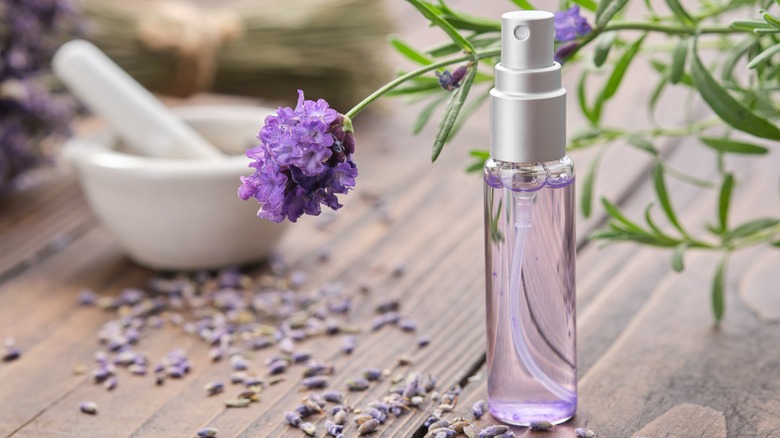Dermatologist-Approved Ways To DIY Your Own Tinted Moisturizer
Creating your own tinted moisturizer at home is a great option if you can't find exactly the right product that works for you and your skin. From being able to get the shade just right to adding the right amount of moisture for your skin type, you can easily customize a product that was essentially made just for you. After all, "The simplest way to think of tinted moisturizer is as a regular moisturizer plus pigment," as Boston-based dermatologist Uchenna Okereke, MD, FAAD, told Self.
As popular as the do-it-yourself approach has become, which has been made even more prominent by social media outlets such as TikTok, it's good to keep the advice of dermatologists in mind when you set out to put anything on your skin. Fortunately, many dermatologists have recognized that the public is hopping on the DIY angle and have dispensed some words of wisdom for anyone looking to mix up their own tinted moisturizer at home.
Mix your foundation and a moisturizer
The simplest and most straightforward recipe for a DIY tinted moisturizer is to mix your existing foundation shade and a moisturizer. Here, you'll want to use equal amounts of each product to start, and then you can adjust those amounts as needed.
Sites such as WikiHow advise adding some bronzer to the mix of foundation and moisturizer, while the blog for fashion brand Free People specifies using just a moisturizer and bronzing powder. Depending on your skin tone, you might need to adjust the products you use and the ratios in which you use them until you find the combination that you like best.
When it comes to mixing any skincare products, be sure to keep in mind this tip that dermatologist Dr. David Lortscher told InStyle: "Your skincare routine should include products that complement each other in order to avoid over-drying, over-exfoliating, or irritating the skin."
Add sunscreen or another product with SPF
As discussed by NBC News, many commercial tinted moisturizers also contain some level of SPF, and dermatologist Dr. Tracy Evans suggests applying sunscreen both underneath and on top of your tinted moisturizer if it doesn't have SPF. If you've determined that the ingredients in each of your products won't react in an unintended way by mixing them, adding a product with SPF could be beneficial.
That said, dermatologist Jeanine Downie, MD, expressed to MindBodyGreen, "I definitely feel that moisturizer combined with sunscreen decreases the effectiveness of sunscreen." Dermatologist Hadley King, MD, added the reminder that any products that are labeled as having SPF have been tested for it, saying, "It's not like they took a sunscreen of a certain SPF and then diluted it with moisturizer — the finished product must be tested to determine its SPF."
Being at greater risk for skin cancer, for instance, could mean that you'll want to skip this tip and check in with your own dermatologist for their opinion first.
Use natural ingredients for color
Natural ingredients can also be used in place of foundation or bronzer to add some color to your tinted moisturizer. Discussing how the ingredients published by Byrdie could help those of varying skin tones, dermatologist Dr. Marisa Garshick said of cocoa powder specifically, "Cocoa powder is rich in antioxidants as it contains flavonols, so it helps to fight free radical damage and improve the appearance of the skin, specifically as it relates to elasticity in the skin. Additionally, it contains polyphenols, another type of antioxidant, which may help protect against UV damage."
Dermatologist Shirley Chi, MD, echoed the same point to Well + Good, saying, "When applying cocoa directly to your skin, you get all of the antioxidants, which include polyphenols, procyanidin, and flavonoids. So it's really great for anti-aging, moisturizing, and for protecting against environmental pollutants."
In its online ingredient library, L'Oréal Paris similarly supports the use of cocoa applied to the skin, and the ingredient library also includes listings for other pigmented ingredients that you might have at home, including cinnamon.
Add essential oils with caution
Many online tutorials for creating your own tinted moisturizer at home suggest the use of essential oils. In addition to making sure that you can mix any essential oils you want to use safely in conjunction with any other ingredients you might be adding to your DIY tinted moisturizer, dermatologists have some suggestions related to the use of essential oils themselves.
"It's becoming more problematic because people are using undiluted forms of these oils to make their own product," dermatologist Dr. Annie Gonzalez told The New York Times about the public's more widespread use of essential oils amid the COVID-19 pandemic. Likewise, dermatologist Dr. Rachel Nazarian advised Harper's Bazaar that those looking to use essential oils use caution in doing so, saying, "Don't assume that all essential oils will help your skin. Stick to the tried-and-true oils that have been clinically studied, and when in doubt, ask your dermatologist before using." If you know that your skin reacts well to a certain essential oil, though, this could be its time to shine.




